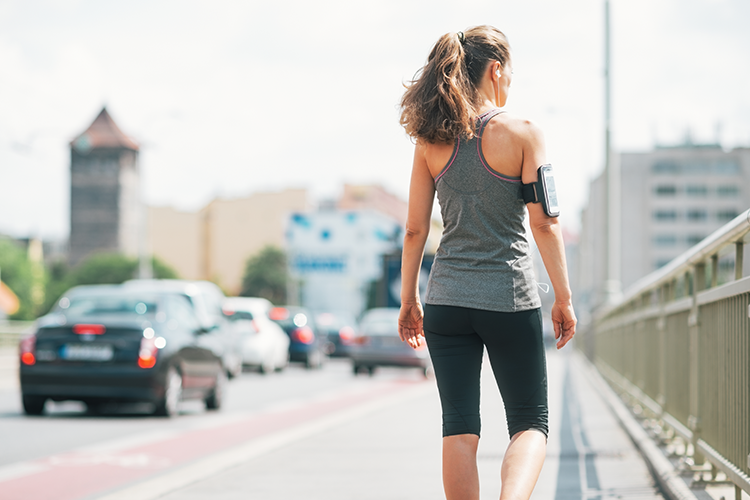Blog
Walk against type 2 diabetes
 Time to get your stroll on, kids!
Time to get your stroll on, kids!
It is pretty well known that lack of exercise may increase risk for development of type 2 diabetes.1
And now it appears that regularly going for a brisk walk may help curb the development of the condition in pre-diabetic folk, according to a recent trial.
The study
150 pre-diabetic participants with elevated fasting blood glucose levels were assessed over 6 months. They were split into four groups as follows:
- Required to cut energy intake, eat a low-fat diet, and undertake a low amount of moderate intensity exercise – 12km of brisk walking weekly
- Required to undertake low amount of moderate intensity exercise – 12km of brisk walking weekly
- Required to undertake high amount of moderate intensity exercise – 18km of brisk walking weekly
- Required to undertake high amount of vigorous intensity exercise – 18km of jogging weekly.2
The results?
Well, the group that included some dietary intervention fared best with a 9% improvement in glucose tolerance; but a close second was the group who undertook a high amount of brisk walking, with a 7% improvement in glucose tolerance in the pre-diabetic individuals, as well as 2kg loss in weight.2
The group who walked less saw a 5% improvement, with the vigorous exercise group seeing some improvement, but only at 2%.
Great! Exercise helps! And according to the study, aiming for 2.5km a day can be pretty effective in boosting glucose tolerance.
Walking can also act as an agent to de-stress and unwind, which may also have a part of play in its beneficial effects.
Dr. William Kraus, the study lead author considers the way different intensities of exercise impact the body, saying “High-intensity exercise tends to burn glucose more than fat, while moderate-intensity exercise tends to burn fat more than glucose.”
“We believe that one benefit of moderate-intensity exercise is that it burns off fat in the muscles, which relieves the block of glucose uptake by the muscles. That’s important because muscle is the major place to store glucose after a meal,” Kraus said.
Diabetes on the rise
This is timely – other new research has found the prevalence of type 2 diabetes in U.S. teens is higher than expected, and numbers of U.K. children with the condition are on the rise. Not great.3;4
In Australia, type 2 diabetes comprises 85% of the estimated 1.7million diabetic population.1 Loss of eyesight, being on dialysis, and amputation are just some of the devastating consequences if left unchecked.5
A recent study has found it may also contribute to decreased hippocampal function and memory loss in the elderly, so get that blood pumping and move!6
Load up on veg and enjoy healthy fats!
Not only can some exercise help boost glucose tolerance, what we eat can have a positive impact in reducing the risk of developing type 2 diabetes.
We have written on studies released of late describing the potential positive effects when eating an abundance of vegetables and including some whole food fats in the diet.
This further supports what we bang on about here at That Sugar – focusing on real, whole foods can do wonders for health. Especially alongside physical exercise and a good night’s sleep!
So grab a friend, your dog, or some headphones and kick ass podcast, and set out for a (fast-paced) stroll J
By Angela Johnson (BHSc Nut. Med.)
References:
- Colberg, SR, Sigal, RJ, Fernhall, B, Regensteiner, JG, Blissmer, BJ, Rubin, RR, Chasan-Taber, L, Albright, AL, & Braun, B 2010, ‘Exercise and type 2 diabetes: the American College of Sports Medicine and the American Diabetes Association: joint position statement’, Diabetes Care, vol. 33, no. 12, pp. e147-e167.
- Slentz, CA Bateman, LAWillis, LH Granville, EO Piner, LW Samsa, GP Setji, TL Muehlbauer, MJ Huffman, KM Bales, CW Kraus, WE 2016, ‘Effects of exercise training alone vs a combined exercise and nutritional lifestyle intervention on glucose homeostasis in prediabetic individuals: a randomised controlled trial’,Diabetologia, Epub ahead of print].
- Menke A, Casagrande S, Cowie CC 2016, ‘Prevalence of Diabetes in Adolescents Aged 12 to 19 Years in the United States, 2005-2014’, JAMA, 316, no. 3, pp. 344-345.
- Royal College of Paediatrics and Child Health 2016, 500 children suffering from type 2 diabetes is ‘wake-up call’ for the nation, viewed 26 July 2016, <http://www.rcpch.ac.uk/news/500-children-suffering-type-2-diabetes-wake-call-nation>
- Diabetes Australia 2015, Diabetes in Australia, viewed 11 July 2016, <https://www.diabetesaustralia.com.au/diabetes-in-australia>
- Hirabayashi, N, Hata, J, Ohara, T, Mukai, N, Nagata, M, Shibata, M, Gotoh, S, Furuta, Y, Yamashita, F, Yoshihara, K, Kitazono, T, Sudo, N, Kiyohara, Y, & Ninomiya, T 2016, ‘Association Between Diabetes and Hippocampal Atrophy in Elderly Japanese: The Hisayama Study’,Diabetes Care, [Epub ahead of print].











